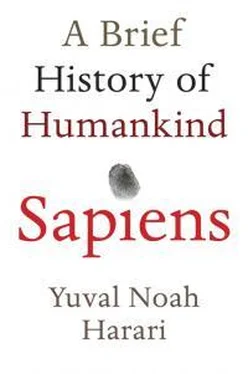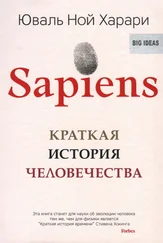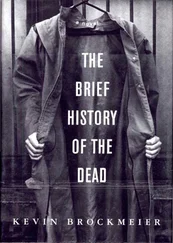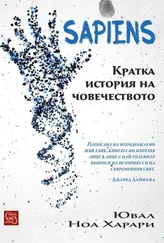If this is so, then our entire understanding of the history of happiness might be misguided. Maybe it isn’t so important whether people’s expectations are fulfilled and whether they enjoy pleasant feelings. The main question is whether people know the truth about themselves. What evidence do we have that people today understand this truth any better than ancient foragers or medieval peasants?
Scholars began to study the history of happiness only a few years ago, and we are still formulating initial hypotheses and searching for appropriate research methods. It’s much too early to adopt rigid conclusions and end a debate that’s hardly yet begun. What is important is to get to know as many different approaches as possible and to ask the right questions.
Most history books focus on the ideas of great thinkers, the bravery of warriors, the charity of saints and the creativity of artists. They have much to tell about the weaving and unravelling of social structures, about the rise and fall of empires, about the discovery and spread of technologies. Yet they say nothing about how all this influenced the happiness and suffering of individuals. This is the biggest lacuna in our understanding of history. We had better start filling it.
* Paradoxically, while psychological studies of subjective well-being rely on people’s ability to diagnose their happiness correctly, the basic raison d’être of psychotherapy is that people don’t really know themselves and that they sometimes need professional help to free themselves of self-destructive behaviours.
20
The End of Homo Sapiens
THIS BOOK BEGAN BY PRESENTING HISTORY as the next stage in the continuum of physics to chemistry to biology. Sapiens are subject to the same physical forces, chemical reactions and natural-selection processes that govern all living beings. Natural selection may have provided Homo sapiens with a much larger playing field than it has given to any other organism, but the field has still had its boundaries. The implication has been that, no matter what their efforts and achievements, Sapiens are incapable of breaking free of their biologically determined limits.
But at the dawn of the twenty-first century, this is no longer true: Homo sapiens is transcending those limits. It is now beginning to break the laws of natural selection, replacing them with the laws of intelligent design.
For close to 4 billion years, every single organism on the planet evolved subject to natural selection. Not even one was designed by an intelligent creator. The giraffe, for example, got its long neck thanks to competition between archaic giraffes rather than to the whims of a super-intelligent being. Proto-giraffes who had longer necks had access to more food and consequently produced more offspring than did those with shorter necks. Nobody, certainly not the giraffes, said, ‘A long neck would enable giraffes to munch leaves off the treetops. Let’s extend it.’ The beauty of Darwin’s theory is that it does not need to assume an intelligent designer to explain how giraffes ended up with long necks.
For billions of years, intelligent design was not even an option, because there was no intelligence which could design things. Microorganisms, which until quite recently were the only living things around, are capable of amazing feats. A microorganism belonging to one species can incorporate genetic codes from a completely different species into its cell and thereby gain new capabilities, such as resistance to antibiotics. Yet, as best we know, microorganisms have no consciousness, no aims in life, and no ability to plan ahead.
At some stage organisms such as giraffes, dolphins, chimpanzees and Neanderthals evolved consciousness and the ability to plan ahead. But even if a Neanderthal fantasised about fowls so fat and slow-moving that he could just scoop them up whenever he was hungry, he had no way of turning that fantasy into reality. He had to hunt the birds that had been naturally selected.
The first crack in the old regime appeared about 10,000 years ago, during the Agricultural Revolution. Sapiens who dreamed of fat, slow-moving chickens discovered that if they mated the fattest hen with the slowest cock, some of their offspring would be both fat and slow. If you mated those offspring with each other, you could produce a line of fat, slow birds. It was a race of chickens unknown to nature, produced by the intelligent design not of a god but of a human.
Still, compared to an all-powerful deity, Homo sapiens had limited design skills. Sapiens could use selective breeding to detour around and accelerate the natural-selection processes that normally affected chickens, but they could not introduce completely new characteristics that were absent from the genetic pool of wild chickens. In a way, the relationship between Homo sapiens and chickens was similar to many other symbiotic relationships that have so often arisen on their own in nature. Sapiens exerted peculiar selective pressures on chickens that caused the fat and slow ones to proliferate, just as pollinating bees select flowers, causing the bright colourful ones to proliferate.
Today, the 4-billion-year-old regime of natural selection is facing a completely different challenge. In laboratories throughout the world, scientists are engineering living beings. They break the laws of natural selection with impunity, unbridled even by an organisms original characteristics. Eduardo Kac, a Brazilian bio-artist, decided in 2000 to create a new work of art: a fluorescent green rabbit. Kac contacted a French laboratory and offered it a fee to engineer a radiant bunny according to his specifications. The French scientists took a run-of-the-mill white rabbit embryo, implanted in its DNA a gene taken from a green fluorescent jellyfish, and voilà ! One green fluorescent rabbit for le monsieur . Kac named the rabbit Alba.
It is impossible to explain the existence of Alba through the laws of natural selection. She is the product of intelligent design. She is also a harbinger of things to come. If the potential Alba signifies is realised in full – and if humankind doesn’t annihilate itself meanwhile – the Scientific Revolution might prove itself far greater than a mere historical revolution. It may turn out to be the most important biological revolution since the appearance of life on earth. After 4 billion years of natural selection, Alba stands at the dawn of a new cosmic era, in which life will be ruled by intelligent design. If this happens, the whole of human history up to that point might, with hindsight, be reinterpreted as a process of experimentation and apprenticeship that revolutionised the game of life. Such a process should be understood from a cosmic perspective of billions of years, rather than from a human perspective of millennia.
Biologists the world over are locked in battle with the intelligent-design movement, which opposes the teaching of Darwinian evolution in schools and claims that biological complexity proves there must be a creator who thought out all biological details in advance. The biologists are right about the past, but the proponents of intelligent design might, ironically, be right about the future.
At the time of writing, the replacement of natural selection by intelligent design could happen in any of three ways: through biological engineering, cyborg engineering (cyborgs are beings that combine organic with non-organic parts) or the engineering of inorganic life.
Of Mice and Men
Biological engineering is deliberate human intervention on the biological level (e.g. implanting a gene) aimed at modifying an organisms shape, capabilities, needs or desires, in order to realize some preconceived cultural idea, such as the artistic predilections of Eduardo Kac.
Читать дальше



![Юваль Ной Харари - Sapiens. Краткая история человечества [litres]](/books/34310/yuval-noj-harari-sapiens-kratkaya-istoriya-cheloveche-thumb.webp)





![Юваль Ной Харари - 21 урок для XXI века [Версия с комментированными отличиями перевода]](/books/412481/yuval-noj-harari-21-urok-dlya-xxi-veka-versiya-s-ko-thumb.webp)


